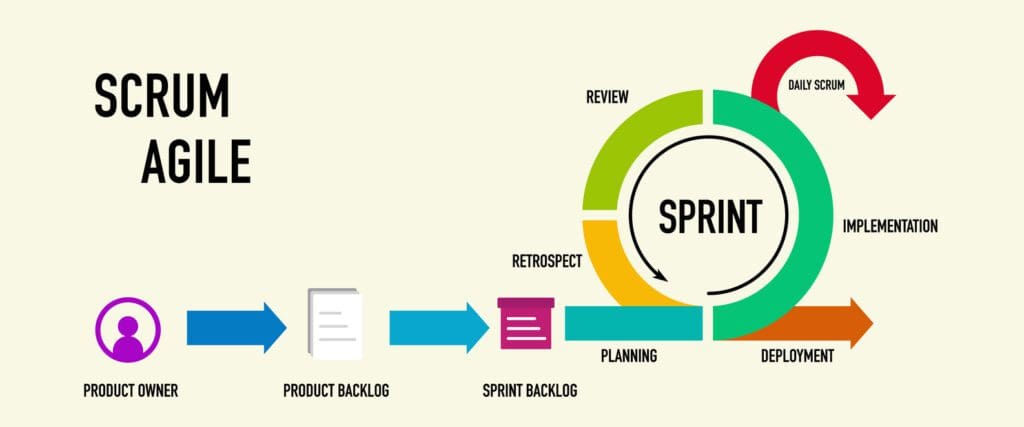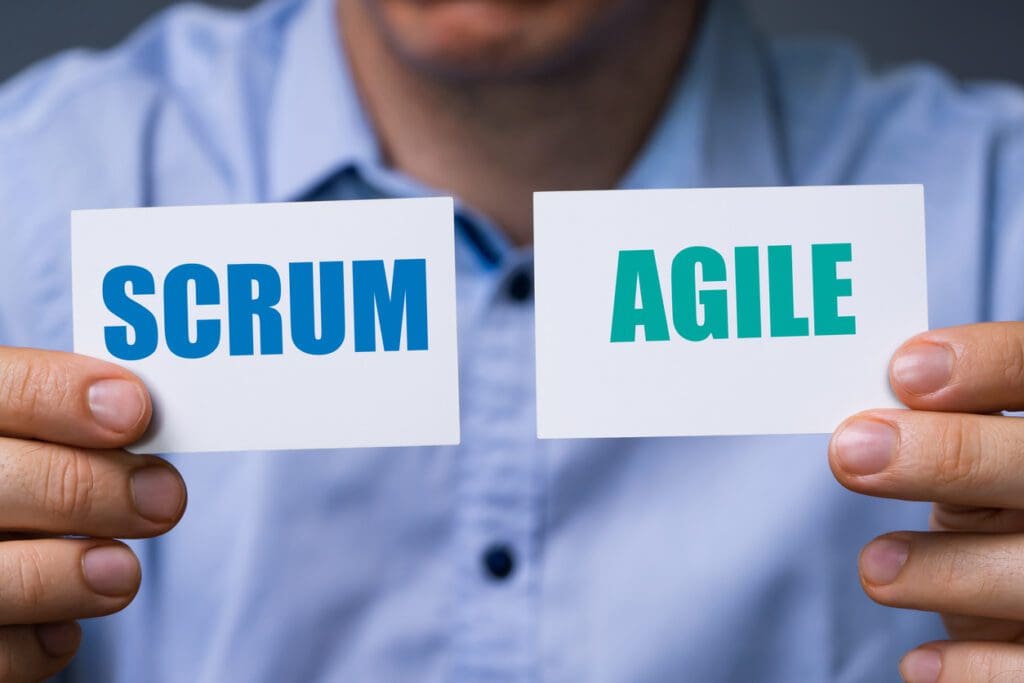Table of Contents
Scrum: The Finest Way of Getting Things Done
Scrum’s primary objective is to satisfy the customer’s requirements by creating an environment of transparency, shared accountability, and continuous enhancement. The creation process begins with an overview of what must be made, developing a list of qualities (the product backlog) that the proprietor of the product wishes to achieve.
The Renaissance
By fusing the ideas from the 1986 article with the concepts of object-oriented development, empirical process control, iterative development, incrementally developing software processes and productivity improvement, as well as the building of complex and dynamic systems, Jeff Sutherland and his team at Easel Corporation established the Scrum process in 1993.
Scrum Process & Methodology
Scrum is precisely how Agile Management emerged. The Scrum approach is based on several clearly defined practises and responsibilities that must be played throughout the software development process. It is a flexible methodology that encourages using the 12 agile principles in situations when all of the product team members have consented.
Scrum is executed in temporary blocks that are short and periodic, called Sprints, which usually range from 2 to 4 weeks, which is the term for feedback and reflection. Each Sprint is an entity in itself; that is, it provides a complete result, a variation of the final product that must be able to be delivered to the client with the least possible effort when requested.
As a starting point, the process has a list of objectives/ requirements that make up the project plan. The project’s client prioritises these objectives, considering a balance of the value and the cost; that is how the iterations and consequent deliveries are determined.
On the one hand, consumers are looking for high-quality items delivered quickly and affordably. To meet these demands, a company must be flexible and agile in product development. It will enable it to produce goods rapidly while maintaining high standards for quality. It is a simple practice, and it has become quite well-liked.
The Scrum technique is mostly used for software development. Still, other industries also benefit from it by incorporating it into their organisational structures, including sales, marketing, and human resources teams.
Diverse Scrum Roles
The Scrum team focuses on producing high-quality software. The owner of a Scrum project concentrates on defining the qualities that the product must have to construct (what to build, what not to make, and in what order) and removing any barriers that can impede the development team’s activity.
The following roles make up the Scrum team:
The Product Owner (PO)
The PO represent the users of the software, encompassing stakeholders and consumers. They concentrate on the business element and are in charge of the project’s return on investment. They communicate the project’s vision to the team, verify the advantages of the stories going into the Product Backlog, and periodically allocate priority to them.
Scrum Master
The team leader encouraged them to follow the methodology’s procedures and regulations. The Scrum Master supervises the project’s challenges reduction and interacts with the Product Owner to maximise ROI. The Scrum Master is liable for keeping Scrum updated and giving teams any required coaching, mentoring, and training.
Advantages of the Scrum methodology
Compared to other agile development methods, Scrum has numerous advantages. It is currently the software industry’s most popular and reliable reference framework.
Here are a few well-known advantages of Scrum:
- Scalability: Scrum methods are iterative and handled over a set amount of time, making it simple for the team to concentrate on specific functions for each time frame. The teams will be able to scale the modules in terms of functionality, design, scope, and characteristics in an orderly, clear, and straightforward manner, with the added benefit of producing superior deliverables that follow the user’s needs.
- Compliance with expectations: The customer determines their expectations by articulating the value that each requirement or component of the project offers. The team evaluates these expectations, and using this understanding, the Product Owner determines the priority of each. The Product Owner regularly confirms that the requirements have been satisfied and provides feedback to the team during the sprint demos.
- Timely Prediction: Using this method, we can determine the average team sprint speed (story points), which allows us to predict when a particular backlog functionality will be available.
- Reduction of risks: By finishing the most significant duties first and being aware of the team’s project-related progress rate, hazards can be efficiently eliminated in advance.
Scrum events
Each Scrum event renders it simpler to adapt certain elements of the process, the product, the progress, or the connections.
The basic unit of work for a Scrum team is the sprint. The primary characteristic sets Scrum apart from other agile development approaches.
- Sprint Planning: Sprint Planning aims to specify what will be done during the Sprint and how it will be accomplished. Each Sprint’s kickoff meeting defines the project’s approach based on the phases and deadlines in the Product Backlog. Different features contribute to each Sprint.
- Daily Scrum: The objective of the Daily Scrum is to evaluate the progress and trend until the end of the Sprint, synchronising the activities and creating a plan for the next 24 hours. It is a brief meeting that takes place daily during the Sprint period. Three questions are answered individually: What did I do yesterday? What am I going to do today? What help do I need? The Scrum Master should try to solve problems or obstacles that arise.
- Sprint Review: The sprint review aims to show what work has been completed regarding the product backlog for future deliveries. The finished sprint is reviewed, and there should already be a clear and tangible advancement in the product to present to the client.
- Sprint Retrospective: The team reviews the completed goals of the finished sprites and writes down the good and the bad to avoid repeating the mistakes. This stage serves to implement improvements from the point of view of the development process. The sprint retrospective aims to identify possible process improvements and generate a plan to implement them in the next Sprint.


The Scrum Artefacts
In Scrum, there are three primary artefacts:
- Product Backlog: The product backlog lists all the features and abilities the final product should have. The product owner assigns objectives to the product’s backlog, which the team uses as a working manual.
- Sprint backlog: The work that will be finished in the current sprint is listed in the sprint backlog. The team builds the sprint backlog at the sprint planning meeting, which is used to monitor the team’s progress.
- Increment: The working product provided at each sprint’s conclusion is called the increment. The total amount of work completed throughout the sprint is the increment.
Conclusion
Scrum is a potent framework that, in its final stages, can help teams to create high-quality software more quickly and efficiently. It is crucial to remember that Scrum is not a panacea and that the team must practise discipline and commitment to succeed.



